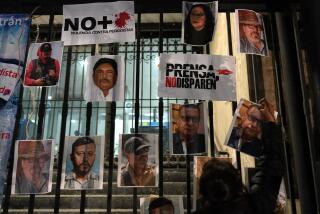Femicides in Mexico: Little progress on longstanding issue
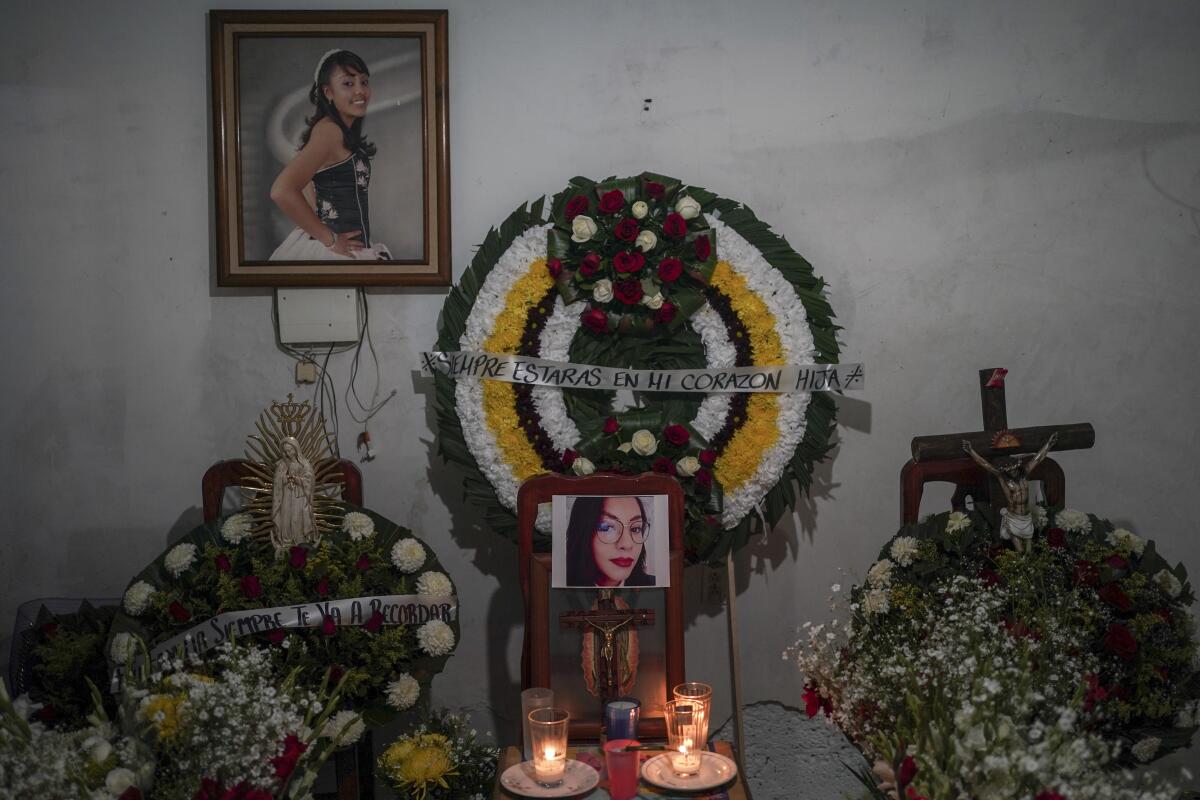
- Share via
ECATEPEC, Mexico — On a November afternoon, Mónica Citlalli Díaz left home in a sprawling suburb of Mexico’s capital and headed to the school where she’d been teaching English for years. It seemed an ordinary day, but on this one, she never arrived at work.
Her absence was an immediate red flag for family and colleagues. Díaz loved her work and was diligent about showing up. Friends and relatives, aware of the alarming frequency with which women disappear here, papered their city of Ecatepec with fliers featuring her photo.
After four days without any sign of Díaz, 30, they blocked the busy street in front of her school for three hours to demand action from authorities. Two days after the protest, her body was found in the brush alongside a highway.
Women in Mexico state, which wraps around Mexico City on three sides, were already dying at a frightening pace. From January to November, there were 131 femicides — cases of women killed because of their gender. Díaz was the ninth apparent femicide during an 11-day spate of killings in and around Mexico City from late October to early November.
The country saw more than 1,000 femicides last year — second only to Brazil in Latin America — and on average, 10 women or girls are killed daily in Mexico. Mexican officials have recognized the femicide rate and violence against women in general as a major problem for decades, yet little progress is evident in national data.
Experts and advocates say the rampant killings and history of femicide in Mexico can be attributed to deep-rooted cultural machismo, systemic gender inequality and latent domestic violence, as well as a justice system riddled with problems — police officers who won’t take reports about missing women, clumsy or nonexistent investigations, prosecutors and judges who revictimize women.
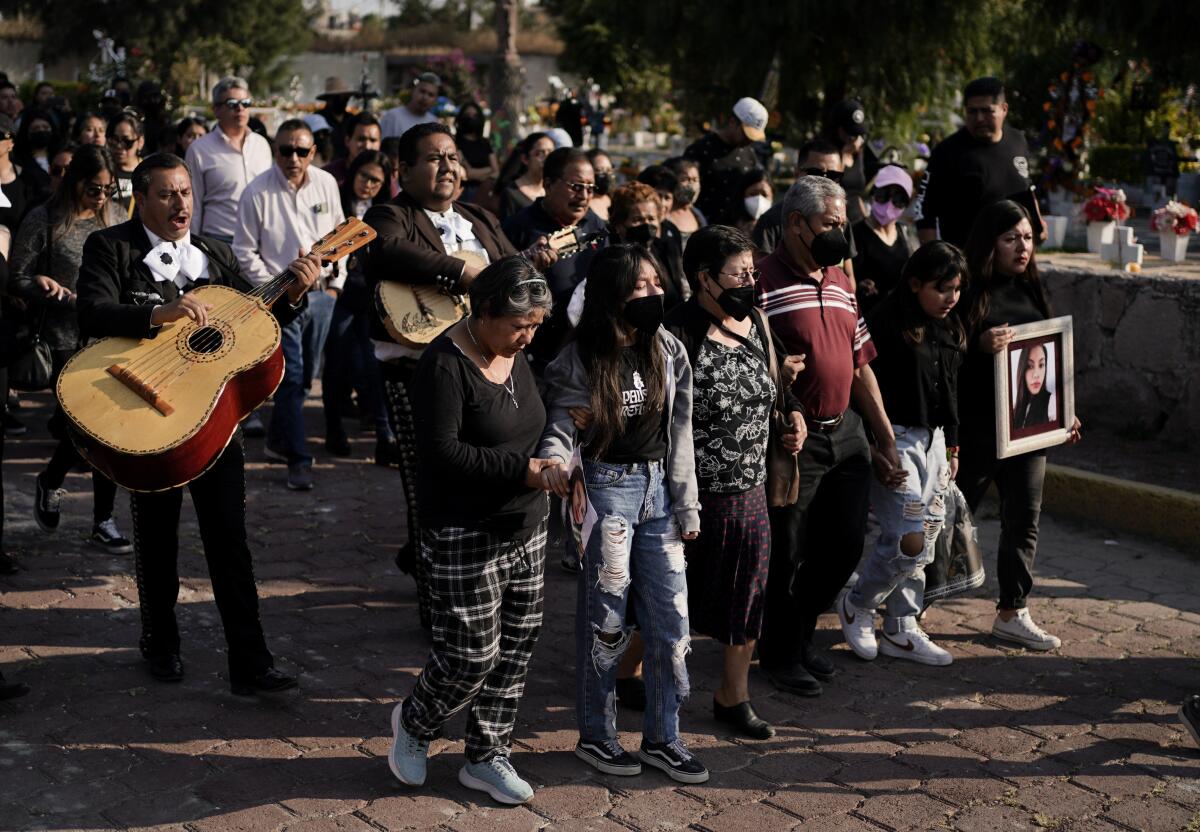
With so many cases of femicide, most get little attention. But the recent run of killings, paired with the protests from Díaz’s family, put pressure on authorities and garnered headlines across the country.
Three days after Díaz disappeared, Supreme Court President Arturo Zaldívar called for a national protocol for handling femicides and said all homicides of women should be investigated as such. The next day, in response to a question at his daily press conference, President Andrés Manuel López Obrador said he agreed — a nationally televised endorsement from the man who sets the country’s daily agenda.
Some states have tried to address the problem by creating prosecutor’s offices for gender crimes. The federal government has declared more than two dozen gender violence alerts since 2015 at the request of civil society groups. The alerts obligate local, state and federal authorities to take coordinated emergency action in specific locations and to address biases in access to justice, prevention and security measures.
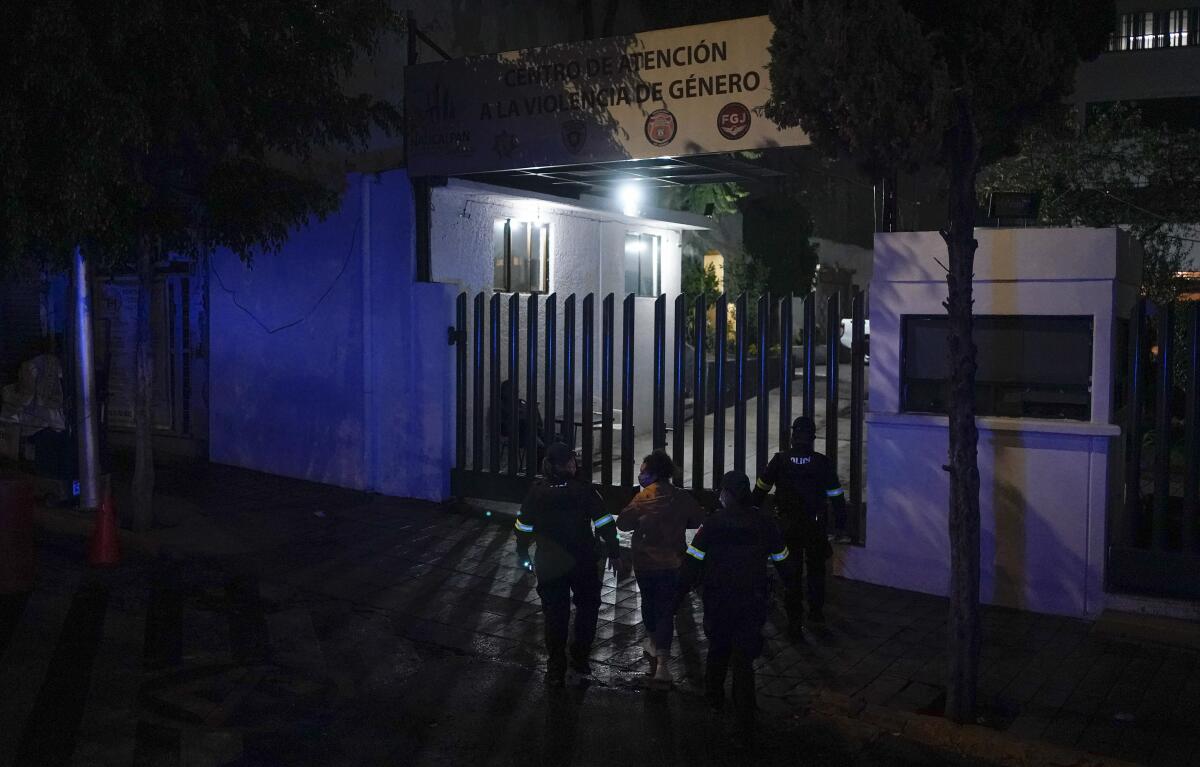
In Mexico state, an alert was declared in 2015 — five years after it was requested — and it still stands. Additionally, Ecatepec is one of the state’s 11 municipalities operating under that alert. But by authorities’ own admission, gains from the alerts and other measures have been limited.
Like many in Mexico, Díaz’s family has become accustomed to hearing about violence against women around them.
“I saw the cases of femicides on television, and I always said: Those poor women, their poor families, their poor children,” Massiel Olvera, Díaz’s older sister, said. “The horrible ways they violate their bodies, the atrocious ways they hurt them, how they leave them.”
Six days after Díaz disappeared, Olvera found herself looking at images of her own sister’s body. As photos began circulating of the latest dumped victim, her phone trembled with incoming messages. The face wasn’t visible, but Olvera recognized the pants her sister had been wearing, her shoes, her hands.
“They left her tossed out like a bag of garbage.”
In the wake of the killings of hundreds of women and girls in the northern border state of Chihuahua in the late 1990s and early 2000s, Mexico’s lower chamber of Congress formed a special commission to study femicide. Composed of lawmakers, experts and officials from across Mexico, it produced a study in 2006.
It found that despite alarming violence against women nationally, it was nearly impossible to get accurate data showing the scope of the problem. Some states didn’t even provide a gender breakdown of victims.
The study also said the country’s inequality between men and women was the structural cause of gender violence. It noted societal machismo and misogyny, and said frequent citing of poverty, criminal groups and drug trafficking obscured the role of gender inequality and ignored the fact that aggressors were often known to victims.
As a result of the commission’s work, the General Law for Women’s Access to a Life Free of Violence was signed in 2007. It created the gender violence alerts. In 2010, lawmakers added femicide — defined as the killing of a woman for reasons of gender — to the federal criminal code.
The next year, Mexico state established its prosecutor’s office on gender crimes.
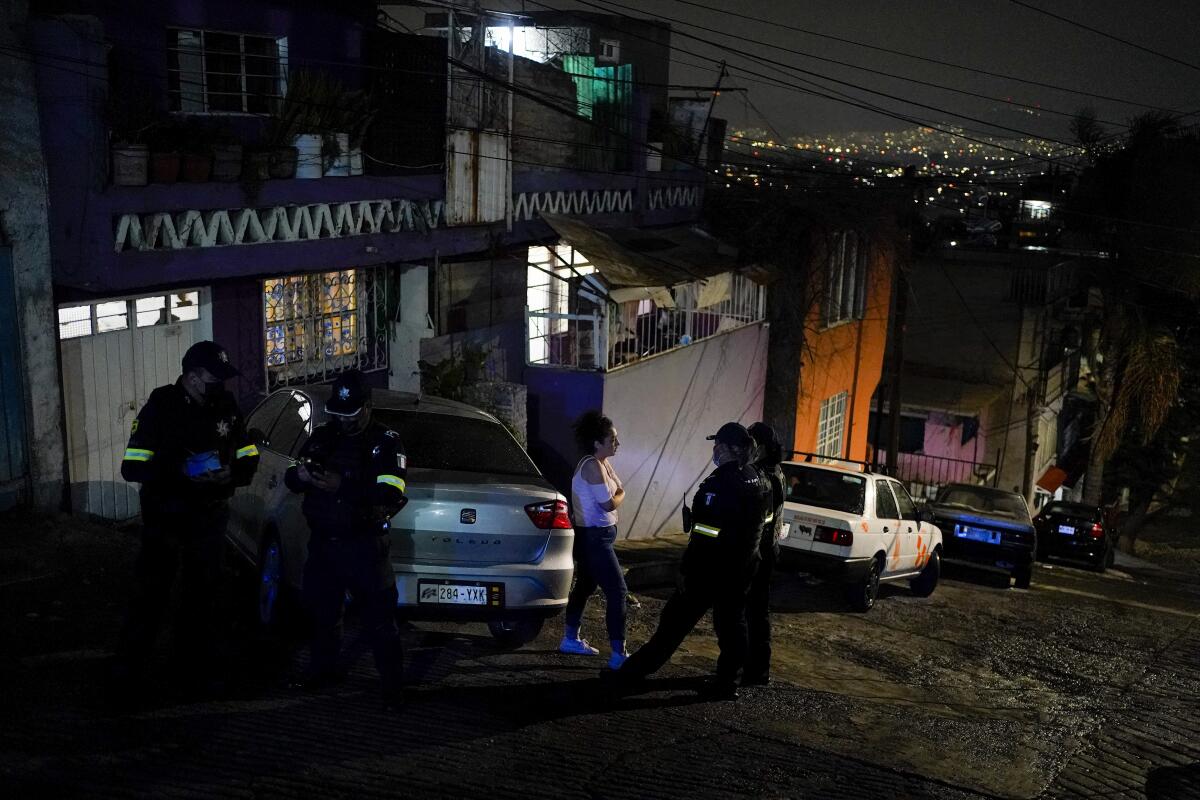
Despite the efforts in Mexico state and other jurisdictions, last year there were more than double the number of femicides in the country than in 2015, according to federal data. Some of that increase could be attributed to better record-keeping — not all Mexican states had codified femicide as a crime until 2017 — but the death toll has risen each year.
Impunidad Cero, a nongovernmental organization that studies the high rate of impunity in Mexico’s justice system, said in its report this month that the rate of femicides nationally last year was 1.55 per 100,000 women, which was 125% higher than six years earlier. Some authorities have attributed that to greater awareness of the issue and a willingness to classify more cases as such.
But the group also found that in 2021, only 27% of violent deaths of women were classified as femicides and that women’s killings were more likely to be classified as unintentional, something akin to manslaughter.
President López Obrador has generally attributed violence against women to the erosion of values under the “neoliberal policy” of his predecessors — common rhetoric when criticizing problems his administration inherited. Recently, though, he has spoken more about femicides, including the comments at daily news conferences.
Still, despite 15 years of recognition of the problem of femicides and efforts to address it, the violence “persists and there are no clear signs that it is declining,” the Gender Equality Observatory for Latin America and the Caribbean, part of the United Nations, said in a recent report.
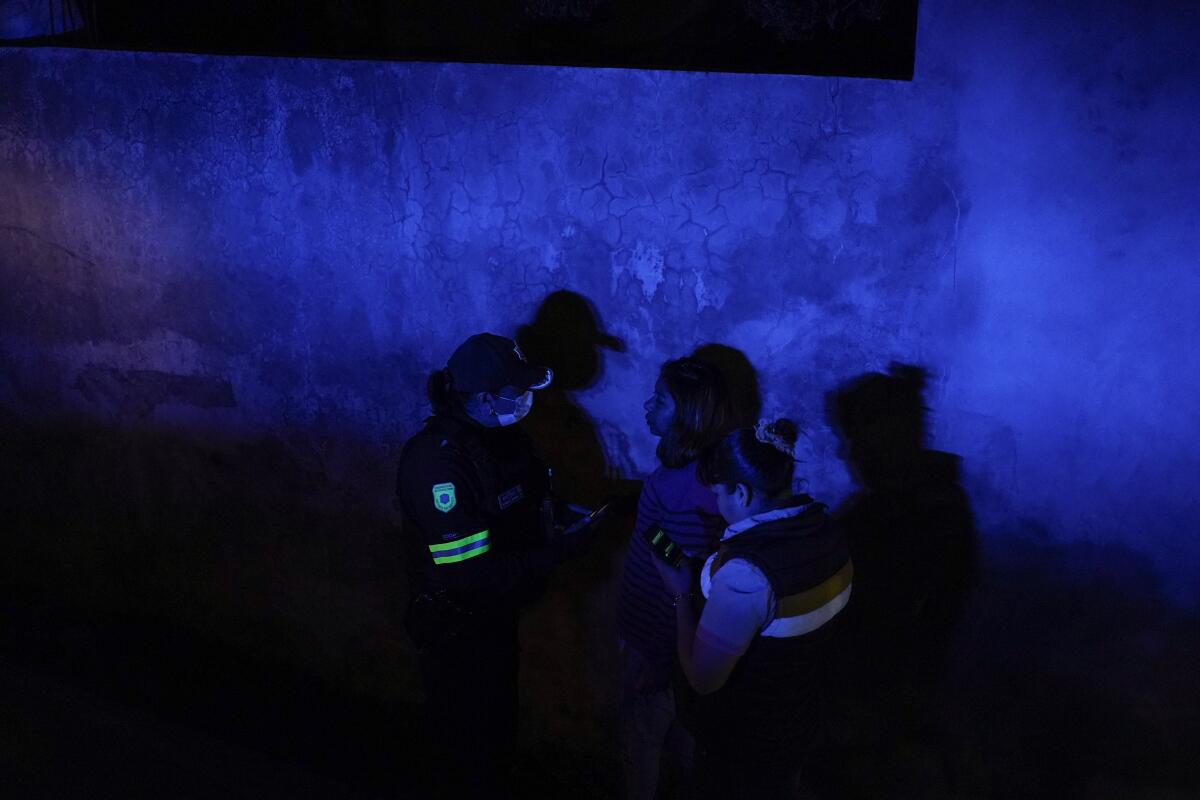
María de la Luz Estrada, coordinator of Mexico’s National Citizens’ Femicide Observatory, put blame on mistakes in investigations, ranging from improper preservation of crime scenes to corruption among local and state police, who in some cases collude with criminals.
“The problem is in the total breakdown of the collapsed justice system,” Estrada said.
Data also show femicides are fairly concentrated. Nine of Mexico’s 2,446 municipalities, including Ecatepec, accounted for 13% of femicides nationally, through September. And 100 municipalities accounted for 58% of the national total.
The state of Mexico ranks 13th among the country’s 32 states in femicides per 100,000 women. Through October, the state’s pace this year was below last year’s.
Dilcya García, who leads the Mexico state prosecutor’s office on gender violence, said the issue is part of the cement of Mexico’s social structure.
“Violence against women is very complicated to tackle and very complex to eradicate,” she said. “The sociocultural patterns, those learned behaviors ... inside private spaces generate and in many cases demand violence against women.”
The day after Díaz’s family blocked the street in Ecatepec, García sat down with them.
The prosecutor told them she was committed to finding Díaz, but raised the possibility she might not be alive. Later, it would be García who called Olvera to tell her they had found her sister’s body.
The case of Diana Velázquez has become emblematic of the dysfunction in femicide investigations both in Mexico state and the country.
Velázquez, a 24-year-old candy vendor, was killed in Chimalhuacán, east of Mexico City, in 2017. She left home early one morning to make a phone call. Her body was found later that day dumped in front of a warehouse. She’d been beaten, raped and strangled.
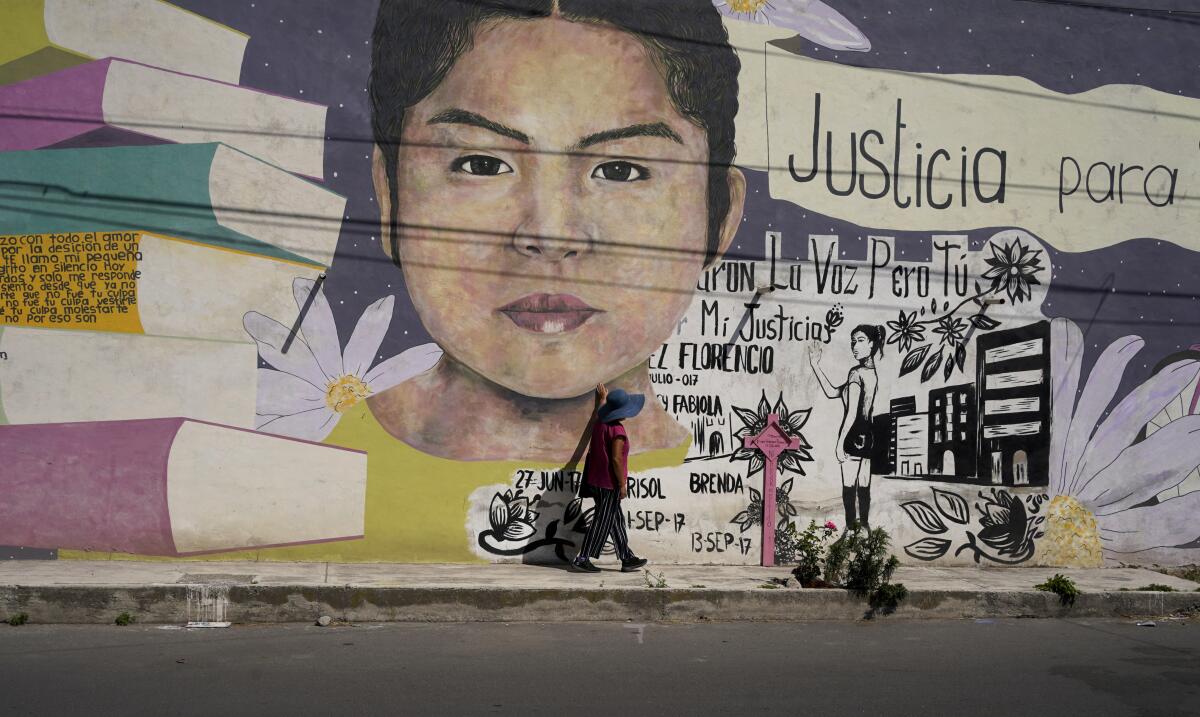
A massive mural of Velázquez’s face now graces the site where her body was discovered. Names of additional femicide victims have been added.
Among the missteps in the botched investigation: Velázquez was initially identified by authorities as a man, so it took days for her family to locate her at the morgue. When they did, they found that her body had been left on the morgue’s patio and had badly decomposed.
During the investigation, authorities lost her clothing, which could have been critical in the collection of genetic material to identify her killer. A judge would later order that her body be exhumed to look for the clothing, but it was never found.
The man arrested for Velázquez’s murder, a mototaxi driver, was sentenced in January to 93 years in prison for femicide. But because the investigation was so flawed and a second suspect was never arrested, Lidia Florencio Guerrero, Diana’s mother, harbors doubts.
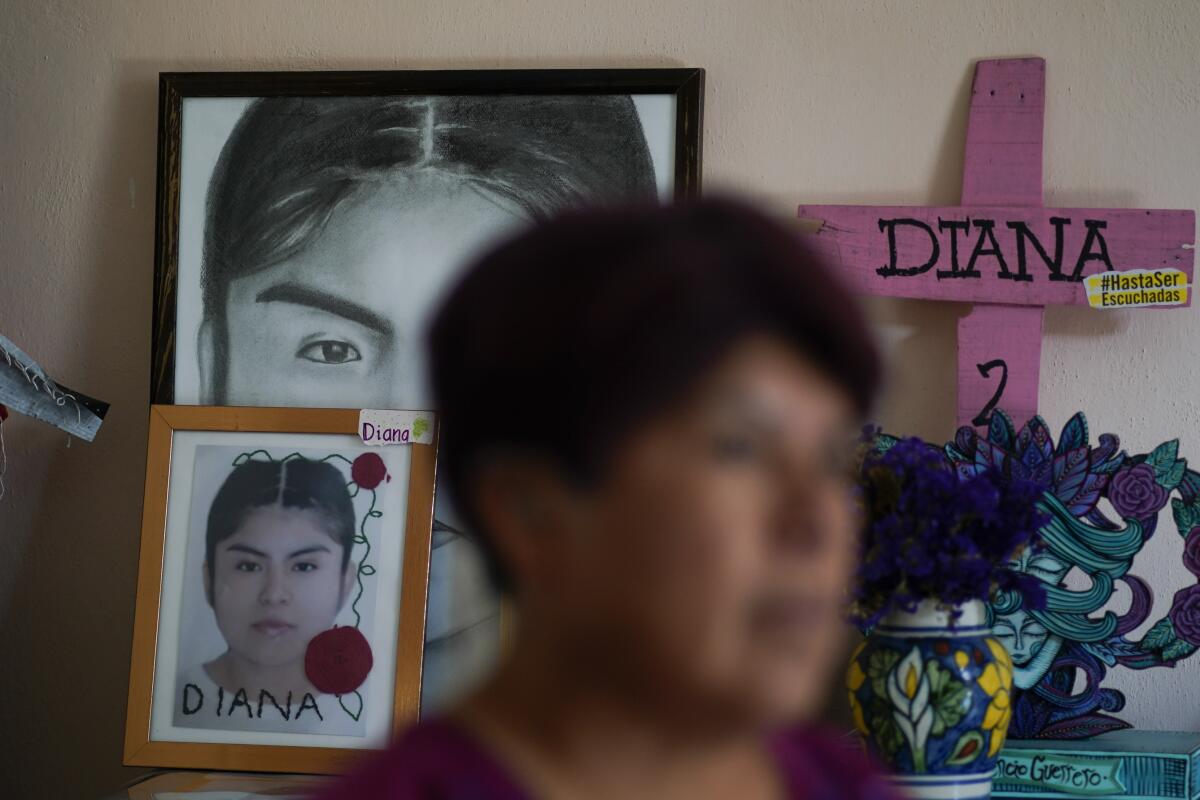
Florencio Guerrero has spent five years campaigning for justice. She speaks publicly and leads marches in a T-shirt bearing her daughter’s face.
“This whole justice apparatus is still a long way from giving us the truth,” she said. “Because of everything the authorities don’t do, the prosecutors, the police, the crime scene technicians.
“We see that those workers are still there, doing bad work, and the relevant authorities don’t sanction them.”
Díaz’s family hoped for a different outcome in Ecatepec.
The bedroom community, population 1.8 million, has experienced tremendous growth and has one of Mexico’s highest concentrations of poverty. Many come from across the country looking for economic opportunities in the capital. Some areas lack municipal water. Traffic and flooding plague neighborhoods. There aren’t enough police to patrol the streets.
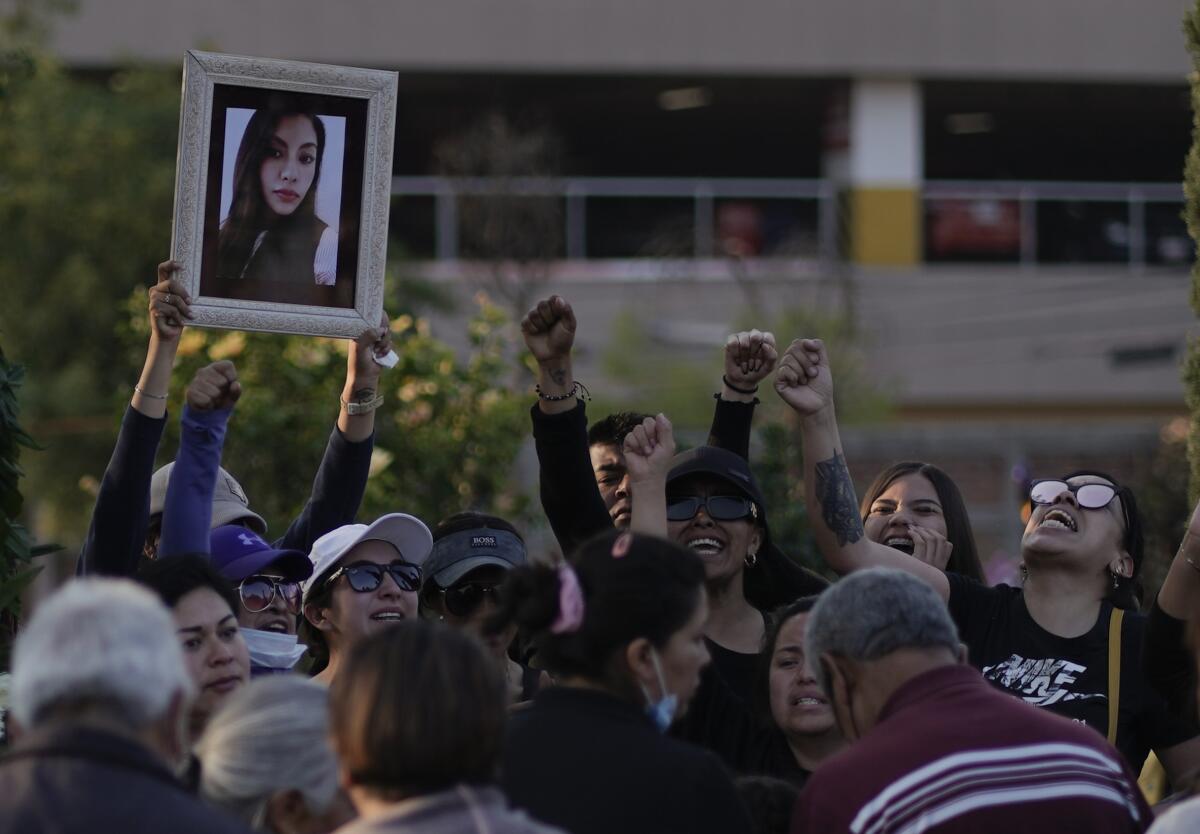
Díaz was fortunate to find a job she loved. She had lots of friends and was dedicated to her 11-year-old daughter, Keila, her family said. She was also close to her sister’s children, often singing and dancing together to reggaeton. They called her sister, rather than aunt.
She’d had her struggles. Díaz had Keila when she was 19, and she left the girl’s father after bouts of domestic violence, according to her sister Olvera. Once, Díaz’s mother came out and hit the man with a rock to make him stop attacking her daughter, her sister said. She moved back in with her parents in a two-story working-class home after leaving Keila’s father.
With a middle-school education, Díaz struggled to support her daughter, waiting tables in various restaurants. Then she found Quick Learning, a chain of English schools, where she studied before going on to teach for seven years.
This year, Díaz met someone new at her gym. Jesús Alexis Álvarez Ortiz was an athletic 27-year-old who worked at a Mexico City hotel.
He was possessive, Olvera said, and she began seeing changes in her sister. She went on a diet and dropped so much weight her eyes appeared yellow and bloodshot. Sometimes she wouldn’t come home until midnight or the next morning.
Still, Díaz never missed work. She left every morning at 6 and returned home at midday to have lunch with Keila and rest, then went back for a second session of classes that carried on into the night.
The evening Díaz disappeared, her father received a strange text message from her phone. “Hey, a friend is going to let me live in her house in Hidalgo for a few months,” it said. The message didn’t mention her job or Keila.
Her family started calling her phone but couldn’t get through.
At 10:30 p.m., Díaz’s boyfriend showed up, asking whether the family had seen her. Álvarez Ortiz appeared nervous, tripping over his words and changing his story, Olvera said.
The next day, Díaz’s parents went to the school, where they found Álvarez Ortiz again. He went with them to report Díaz’s disappearance to police. Two days later, Álvarez Ortiz stopped answering the family’s messages and calls. His mother reported him missing.
Authorities say that after leaving her home that afternoon, Díaz took one taxi to a shopping center, then another to Álvarez Ortiz’s house. Surveillance video showed her enter the home but never leave. Hours later, a SUV arrived and left. Authorities believe it carried Díaz’s body.
A search of the home turned up Díaz’s blood-stained clothing.
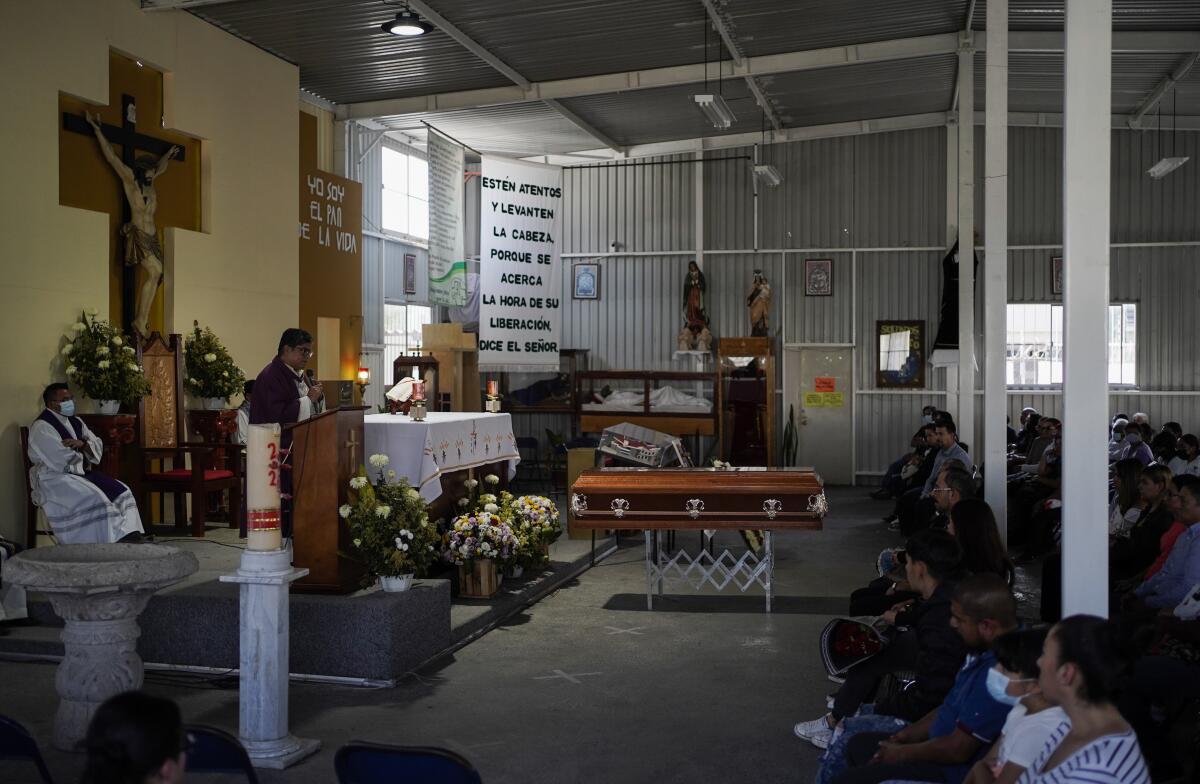
Two days after Díaz’s body was found, police arrested Álvarez Ortiz’s mother. The next day, they arrested him. An autopsy indicated Díaz had been badly beaten and died from a blow to the head.
Álvarez Ortiz has been jailed on a charge of forced disappearance. Díaz’s family hopes that at his next hearing, scheduled for March, prosecutors will be ready to add the femicide charge.
A lawyer for Álvarez Ortiz did reply to messages left by the Associated Press at a school where he teaches.
The loss of Díaz — a mother, daughter, sister and aunt — has gutted the family. Olvera, like Diana Velázquez’s mother and the relatives of hundreds of other victims in recent years, demands justice and wants to see all of those involved held accountable.
“If the authorities don’t give me a favorable answer, I’m going to go back to the street to close the avenue,” she said. “I’m going to stand there until they pay attention to me and do justice.”
More to Read
Sign up for Essential California
The most important California stories and recommendations in your inbox every morning.
You may occasionally receive promotional content from the Los Angeles Times.


